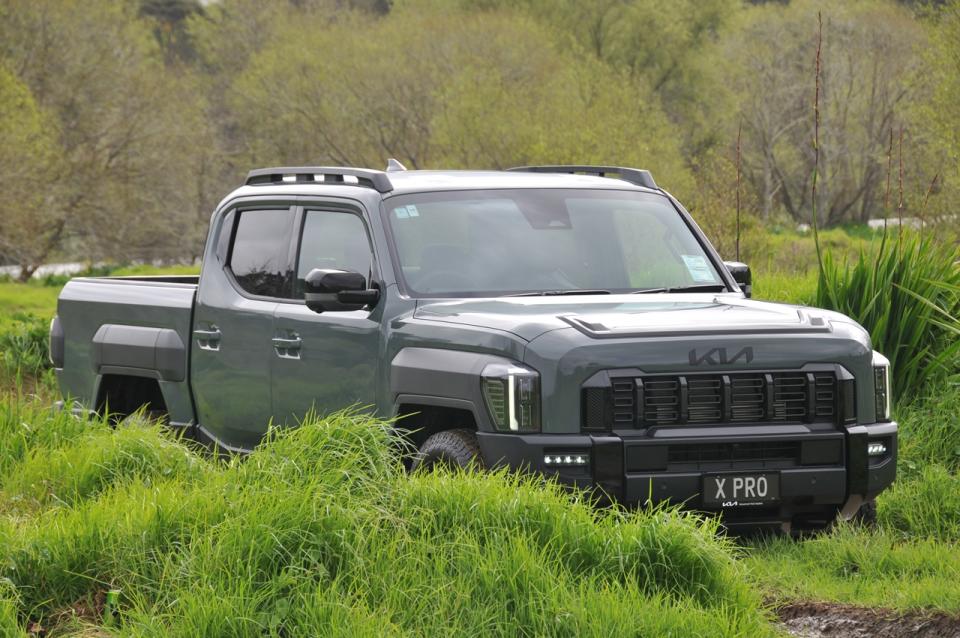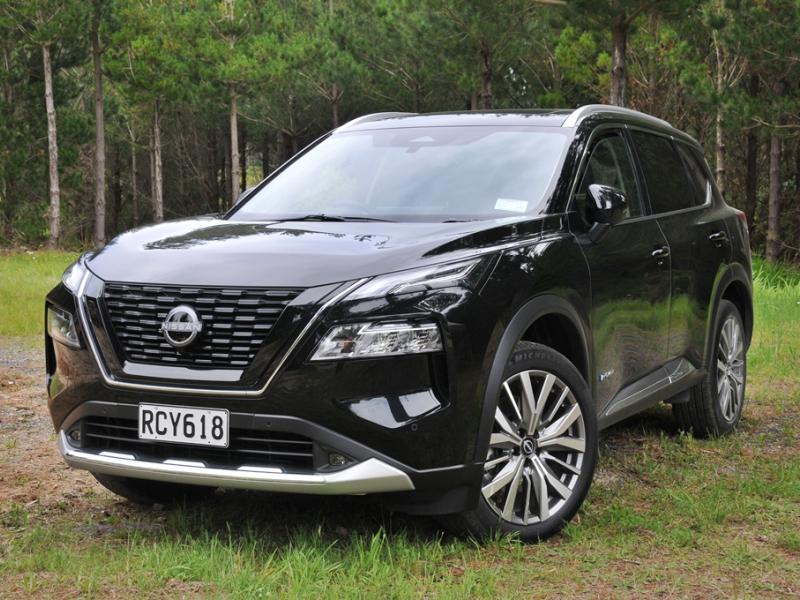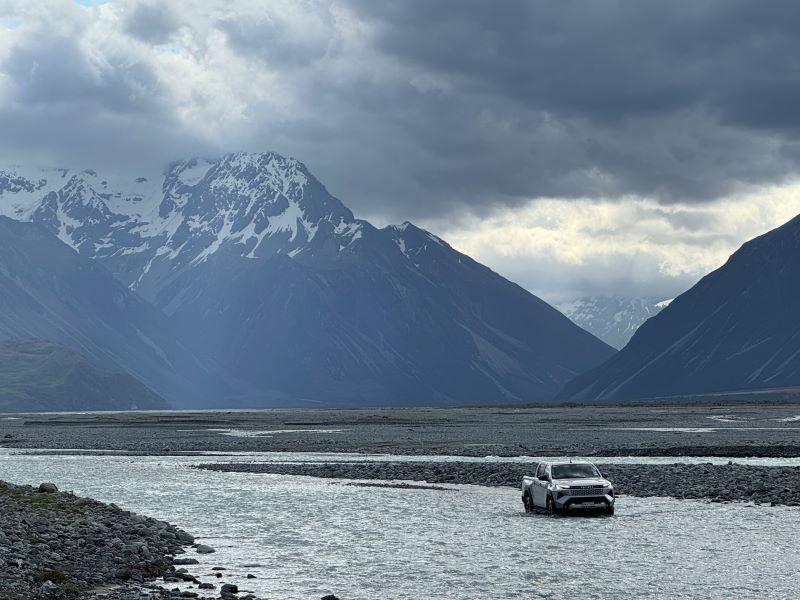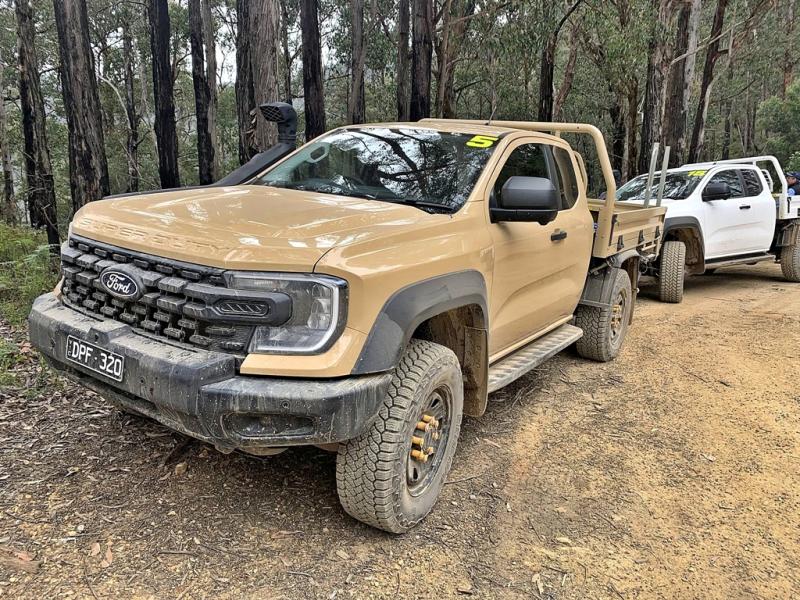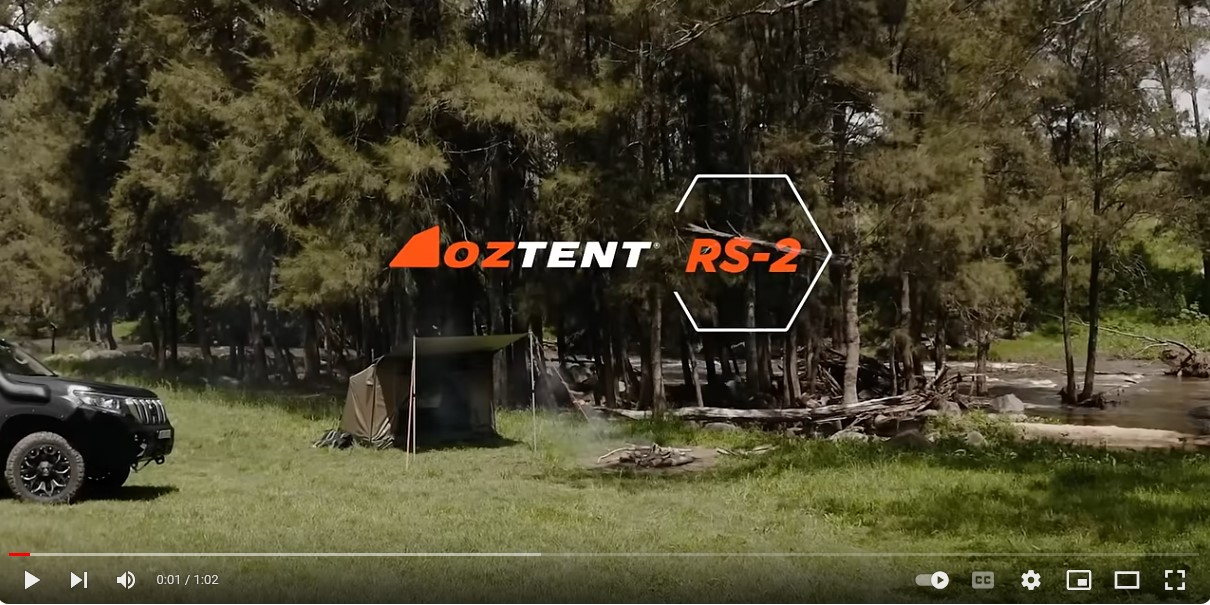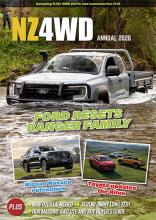It’s been a long time coming.
But Kia's Tasman ute is finally here.
Its basis is a simple and proven formula: a 2.2-litre turbo-diesel four-cylinder engine mated to an eight-speed torque converter automatic transmission and a robust-feeling drivetrain that sends power to all four wheels of a dual-cab four-door ute with conventional ladder frame.
What’s not so conventional, however, is the styling of the Tasman. And boy, haven’t we heard about it. Last year’s global reveal unleashed a tidal wave of criticism towards the appearance of Kia’s debut ute, and that tsunami has yet to subside.
Posting initial images on our social media this month got people a bit excited too.
To the criticisms of the aggrieved we’d say three things.
First, this is Kia’s first shot at a ute, and it’s got some serious muscle. The styling is unique, sure. But does anyone remember the first Ford Ranger or Great Wall ute with affection?
Next, the 4WD double cab ute design landscape is evolving fast, and the new ideas are coming from China and Korea, countries that are quickly becoming powerful forces in the marketplace. Think GWM Cannon Alpha, LDV Terron 9, MGU9 and JAC T9.
Third: drive it, then decide. Any vehicle is defined by its driving dynamics, and Kia’s done an outstanding job of delivering in this area.
The Kia is named after the Tasman Sea, a bold move that’s unlikely to resonate strongly much beyond Australasia and New Zealand. It’s not stretching things to claim that the Tasman is the most important vehicle that Kia has ever launched in Australasia.
From the initial concept work through prototyping and development to durability testing, Kia’s local (Aussie) arm has been deeply involved in the Tasman project.
Strong sales would also help to increase Kia’s overall market share – a key goal for the Korean manufacturer, which aims to wedge itself firmly in Aussie’s top five. A ute is essential to achieving that.
The model range is five-strong, and all share the same engine and transmission. That 2.2-litre engine makes a strong 154kW at 3,800rpm and 440Nm between 1,750 and 2,750rpm – a 1,000rpm peak torque band which is key to the truck’s performance off the line and will deliver a decent towing experience.
Speaking of which, the braked tow rating is 3,500kg; unbraked is 750kg and payload in the tray is over a tonne. For those toting e-bikes an such on a rack, the maximum towball download is a healthy 350kg.
All of this means the whole range will work hard. It’s simply a matter of choosing how much tech and spec is required. All five NZ-market models are 4WD, and all are double cabs. We drove the range-topper, the X-Pro.
Inside
Kia may have pushed the boundaries with the exterior styling of the Tasman, but the interior is the Korean manufacturer at its forward-thinking best.
The cabin is spacious, user-friendly and thoroughly modern, with a massive list of tech and spec features.
Climbing in, the seats and wheel are key contact points and are immediately welcoming.
There’s no questioning the comfort of the X-Pro. It comes equipped with quilted composite leather seats that are both heated and ventilated, and fully power-adjustable. The seat fabric is perforated wherever seat and occupant touch, and seat-base side bolsters are generous. Soft netting headrests cushion the head.
Information-wise, Kia’s connected car Navigation Cockpit lives in a wide panoramic screen housing dual 12.3-inch displays. All this is standard across the Tasman range. There’s no punishment for buying the entry-level version.
Opting for X-Pro brings a heated composite leather steering wheel squared-off at top and bottom. The X-Line and X-Pro feature paddle shifters for enhanced transmission control when towing or in tight tracks offroad.
The centre infotainment display is brimming with functionality, most of which is actually useful on a daily basis. That includes wireless smartphone mirroring, native satellite navigation, a detailed off-road display for the X-Pro, and extra mod cons such as connected services and voice control. Sound system is a premier-level Harman Kardon unit. Tired of radio, Spotify or the music on the phone? Kia also supplies a range of ambient music soundscapes including sea sounds and outer space. First time we’ve encountered this, and definitely a first in the 4WD market.
The digital instrument display is clear and well-organised and there are scrollable info options including tyre pressures.
There’s a well-considered mix of physical and screen-accessible controls.
The cabin is roomy and laden with nooks and cubbies and there are two phone charge pads.
While the centre console mightn’t appear special, the lid is unique in that it folds forwards to create a flat table suitable for in-car work stints or feed stops. Setting up the table exposes a bin with decent space and a 12V power outlet. There are USB-C outlets under the centre stack.
Kia’s big on robust metal touch points. The door handles are anodised black aluminium with knurled centres, the audio on/off and volume control is a fluted alloy wheel, and key controls on the steering wheel are smallish knurled alloy barrels.
The centre console is home to another knurled barrel switch, this time for hill descent control; there’s also a wee graphic showing the truck’s key dimensions – in case we needed reminding that it’s 1.9 metres tall and 5.4 metres long.
Common touch points including the armrests and dash are trimmed in soft-touch materials.
Higher-spec versions like the X-Pro have heated outboard seats that can recline up to 30 degrees.
In the second seat row, the Tasman is spacious enough to seat three adults in comfort. Legroom and headroom are generous.
Door panels feature padding at shoulder height – another thoughtful touch for offroad work.
Family buyers will also be drawn to the assortment of amenities in the second row of the Tasman, ranging from flexible zip-up map pockets to a storage container hidden under the rear bench.
Storage pouches are built into the door cards, seat backs and the rear bench itself. Mobile device charging is taken care of by two USB-C outlets and a 240V socket.
There’s a centre armrest with chunky cupholders and a couple of air vents.
In summary, this thing is loaded with tech and spec, more than we could explore in a week – it’s all here: www.kia.co.nz/vehicles/tasman/range-and-specifications/
Outside
The exterior – well, it’s a big step away from the samey-samey 4WD double-cab status quo.
The truck’s nose has tiny projector-type headlight strips and a lot of body-colour panels, and there’s a stone/bug deflector of the front of the bonnet.
The front-end treatment and those eyebrow guards are the bits that have drawn criticism. Is it a huge issue? In the end, that is up to the prospective buyer.
The windscreen has a noise-dampening acoustic layer, and the rest of the glass is ‘privacy’ tinted. The rear of the cab has cool wrap-around look with glass black edges to the rear window.
There are no side steps, which occupants will notice when climbing in or out because ground clearance is 250mm – and that’s under the diffs.
Dimensionally, Tasman is midway between the Ranger and GWM Cannon Alpha when it comes to overall length. It may be a mid-size ute, but it’s a properly big one.
The tub measures 1512mm long, 1572mm wide and 540mm deep, significantly more than key ute segment rivals.
There’s power back there too: X-Pro has one 400W connection.
A bedliner is standard, as well as rear bumper steps and tie-down hooks. The tailgate has electric activation, which is becoming an expected feature these days.
Move aside Ram – the Tasman has its own version of a clever wellside storage box.
Safety
Like almost all new vehicles, the Tasman has a comprehensive suite of driver assist features including Kia’s Highway Driving Assist system and navigation-based adaptive cruise control which combines adaptive cruise control and active lane centring to make long road trips more manageable.
The lane-keep and speed limit warning systems are relentless in their default settings.
Driver attention monitoring also features, which sound an alert if the driver looks away from dead-ahead. It’s less intrusive here than in other Kia models or, for example, Mitsubishi’s Triton.
Driving
Power delivery is smooth. The engine is quiet and the eight-speed automatic transmission shifts intuitively to keep the Tasman within its torque band.
As such, the driving experience is less agricultural than that of four-cylinder rivals.
That sense of smoothness is echoed in the suspension tune.
Like much of its competition, the Tasman has double-wishbone front suspension and a live rear axle with leaf springs, but it’s the finer details that make the difference.
All versions get Kia’s frequency selective Sensitive Damper Control (SDC) and Hydraulic Rebound Stop technology, aimed at improving ride comfort across a wide variety of road surfaces. The frequency selective damper system can vary damping by between 30-40 per cent, while the hydraulic bump stops soften hard impacts.
All versions except X-Pro have a mechanical locking rear differential; the X-Pro has an electronic locking rear differential, as well as an X-Trek mode that functions as a form of off-road cruise control. This works during both downhill and uphill travel, and it intuitively shifts power (torque) around the wheels maximise grip.
Tasman’s ride is firm but controlled, even on unfriendly stretches of country road.
It is a pleasure to drive at higher speeds. There’s no float or bounce from the rear end over undulating tarmac, even with an empty tray, and the four-wheel disc brakes are well matched to the mass of the ute.
The X-Pro arrived on Hankook all-terrain tyres, which are very much of the modern A/T style: quiet and grippy on-road and off.
In corners, it felt reassuringly confident through corners for such a large vehicle, with solid body control and little roll.
Tasman’s enlarged dimensions are noticeable in urban driving and parking poses a challenge, where the surround-view cameras are essential.
Slim body pillars and a large rear window do ensure decent outward visibility.
It cruises comfortably at 100km/h and remains relatively quiet, insulating the driver from unwanted road noise.
Our first brief drive was necessarily gentle in terms of offroading, as the media drive programme is flat out getting Tasmans out to the scribes. We’ll have another drive closer to Christmas. So far though, the X-Pro is plenty capable offroad.
The 4WD system is the intelligent type that’s able to automatically switch between configurations to optimise traction, and it can also be toggled between 2H, 4A, 4H and 4L modes manually. Selectable terrain modes include mud, snow, sand and rock settings.
With 250mm of ground clearance, it sits higher than most rivals. Its approach, departure, and breakover angles are likewise generous: 32.2, 26.2, and 25.8 degrees. That departure angle might occasionally see the rear scrape ground when crossing washouts or ditches. Its wading depth is a top-of-the-class 800mm.
The X-Pro has a dedicated off-road display within the infotainment system that includes surround-view cameras with an underbody view, as well as vehicle ‘health’ and positioning data. We’ll explore that more during our follow-up drive.
Conclusion
For now, we’re impressed. This ute is loaded with tech and its drivetrain promises much for weekend adventures. Decide whether the exterior design is a deal-breaker by all means. But first, go drive one.


